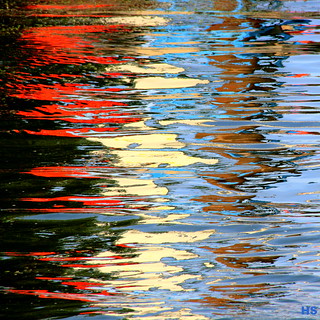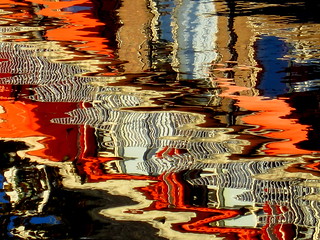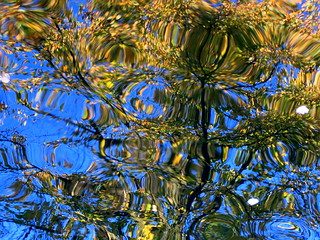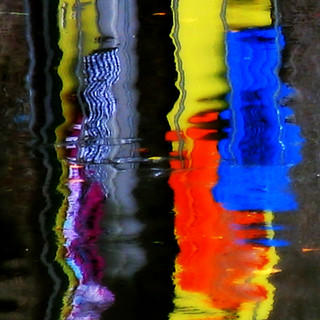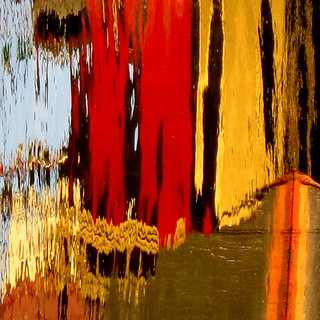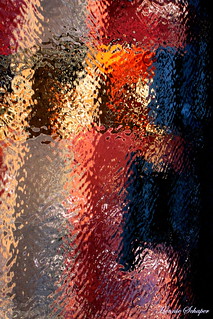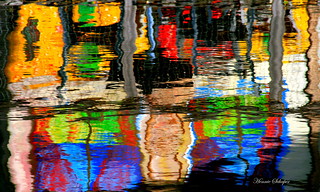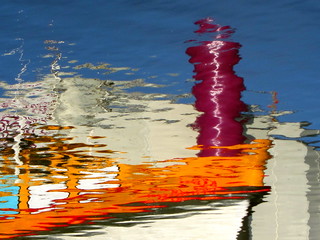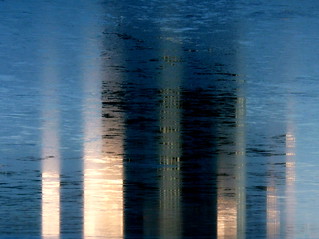A fairly early and very straightforward example from my stream. The colours of a boat reflected in a harbour, without much post-processing. Nowadays I would push further.
I took this shot in our home town of Kampen. The apartments in the building opposite the canal showed wild reflections on the heavily distorted water surface, with the balustrades providing the diagonal white image, and the sun screens the splashes of orange.
The same canal, and very near to the place where I shot the first image - and a totally different result. A more gentle distortion, with a reflected tree, makes for an abstract with impressionist tendencies.
Autumn colours in a park, reflecting in a canal, are an obvious choice for this subject. I shot this one in London's Regents Park, at a moment when the shapes of the ripples caused an almost psychedelic effect.
The reflection itself is interesting due to the colours of the boat and the shapes caused by the rippling water. Rotting the original image by 90 degrees enhanced the abstract quality.
Stunning reflections of storage buildings in a canal near the place where I used to work in Amsterdam. The colours are rather subdued, even pastel-like, but the shapes of the reflections are exquisite. I rotated the image 90 degrees to get an abstracted image which resembles van Gogh's style of painting.
Here is one where I really can't remember what was actually reflected, even though I am fairly sure this is the nearby canal in Kampen. What makes this stand out is the stained glass like effect caused by this particular water movement.
This is a joint effort, actually. The original photograph is a water reflection taken by my dear Flickr friend Jenny Downing (original shot here). With her permission, I gave it a different spin in post-processing: I selected a square crop, pushed the colours and contrast, rotated the image 90 degrees and topped it off with a Lomo-like effect.
This one was taken at the same location and time as the fourth example, just a different painting that was reflected. As someone commented: it looks like someone threw a bunch of paint onto the water!
A fairly recent example, and one of the few reflections in my stream where the water is actually a river. It was taken at a part of the IJssel where the natural flow is decreased due to the presence of a ship and a buoy, which actually provides the purplish colour. I flipped the shot upside down for a better effect.
One last example: reflections of large buildings in Almere in the partially frozen lake. This one works because of the shapes rather than the colours, with the icy reflections adding to the overall feeling. Somewhat reminiscent of the paintings of Richter.

